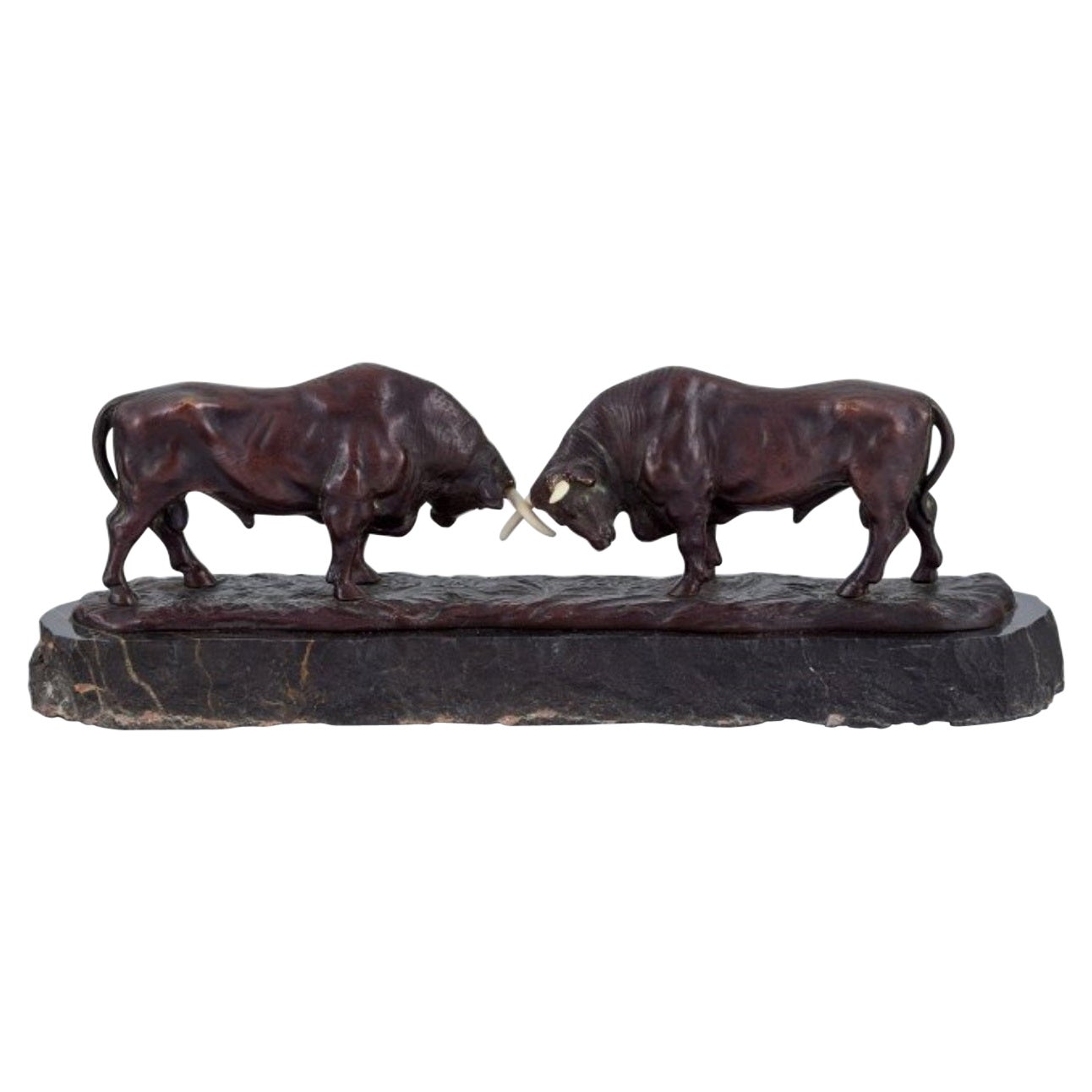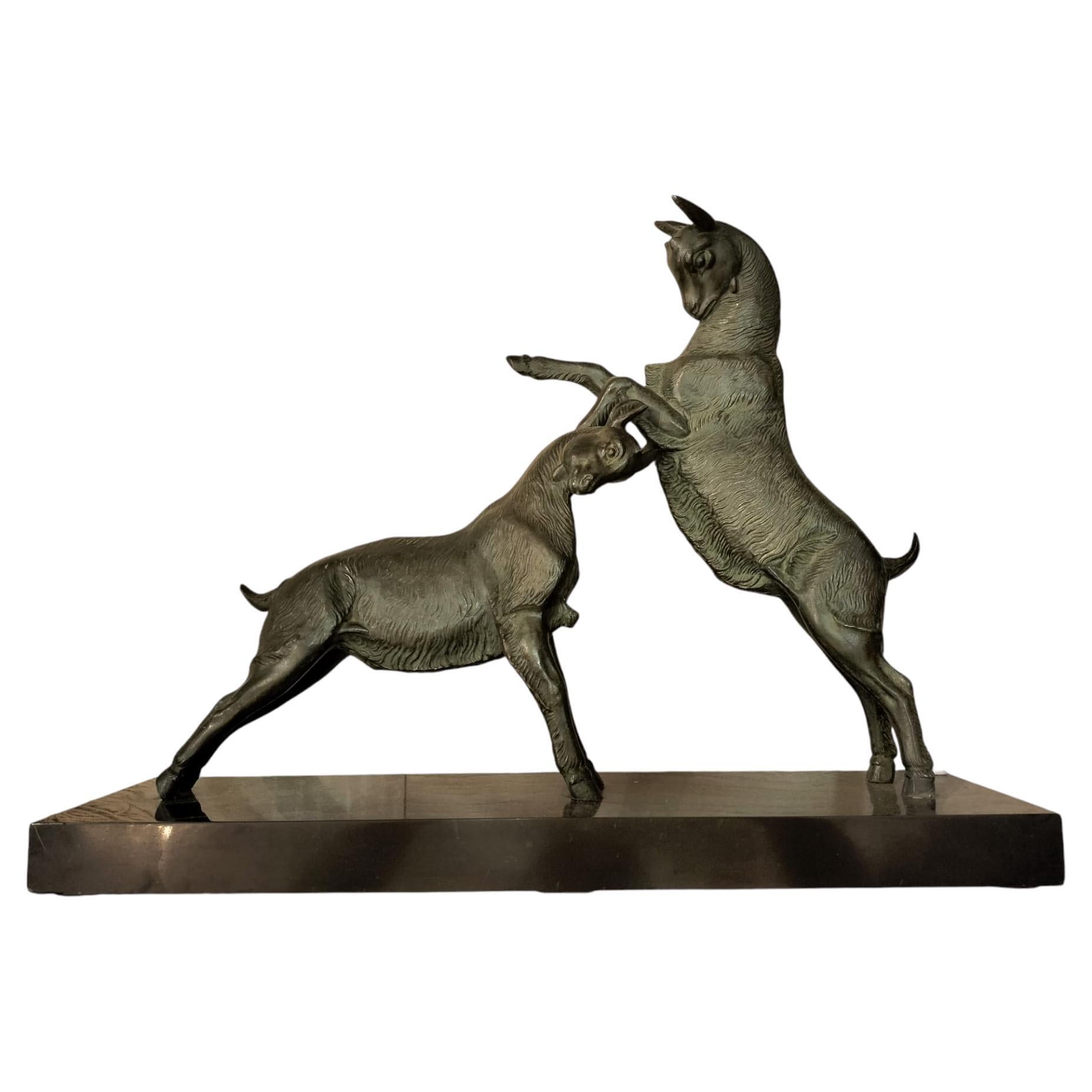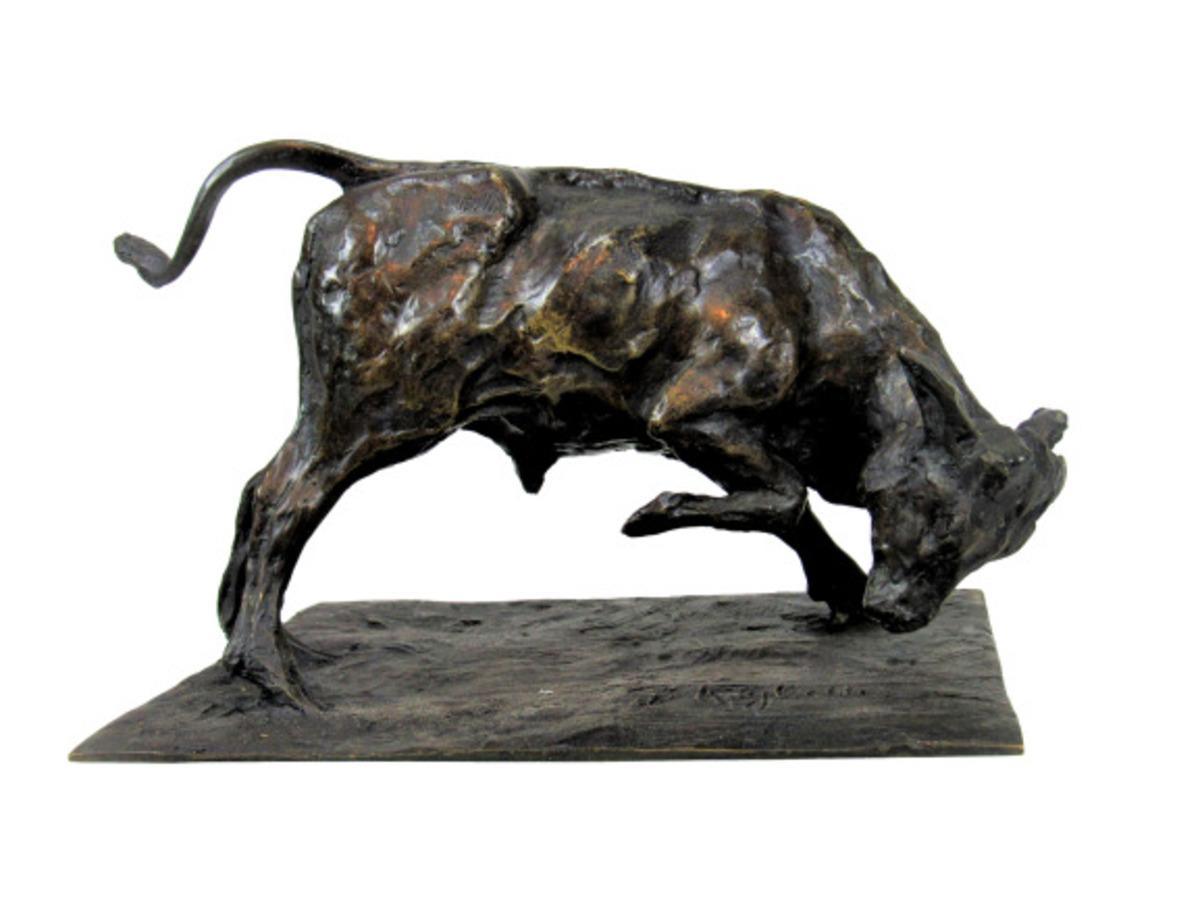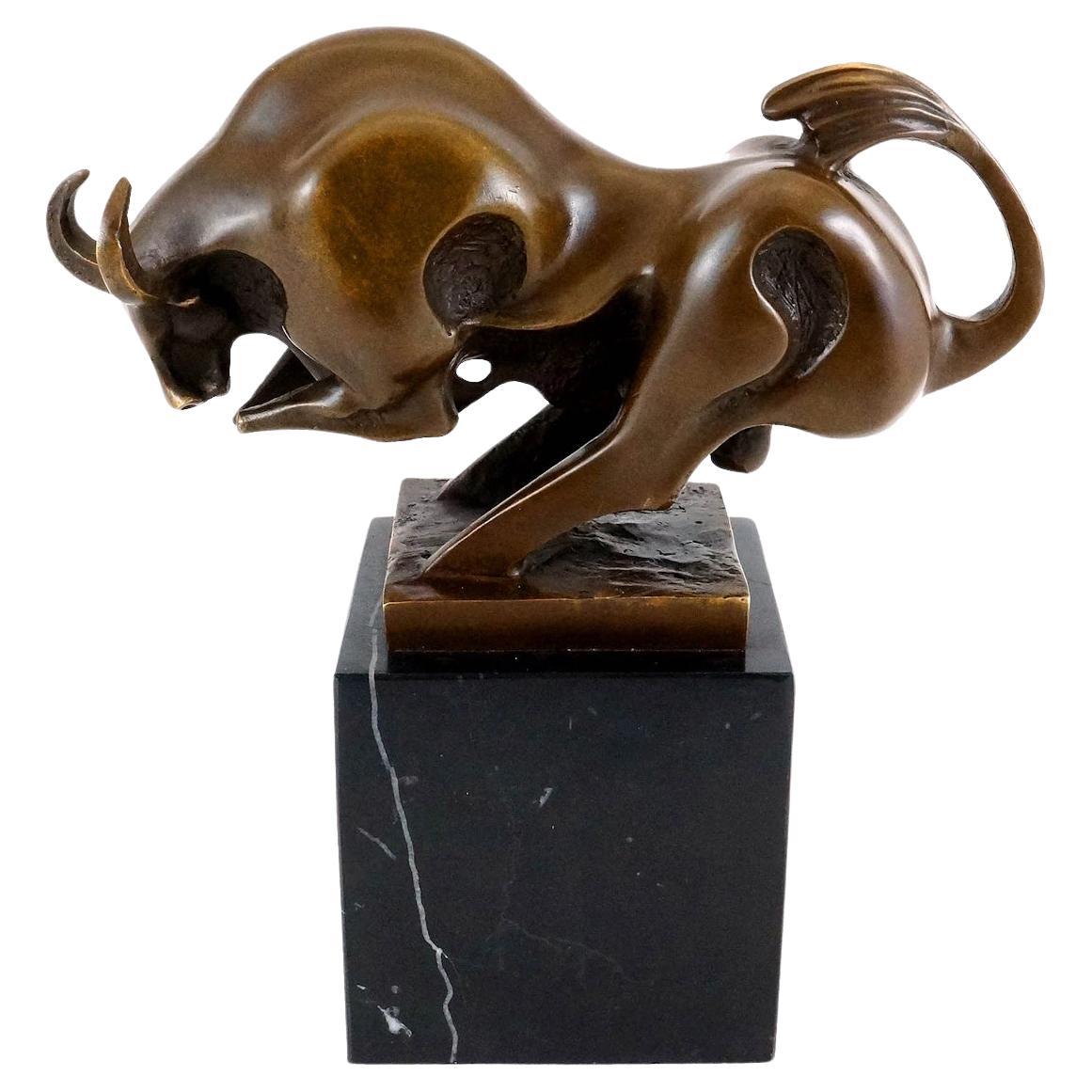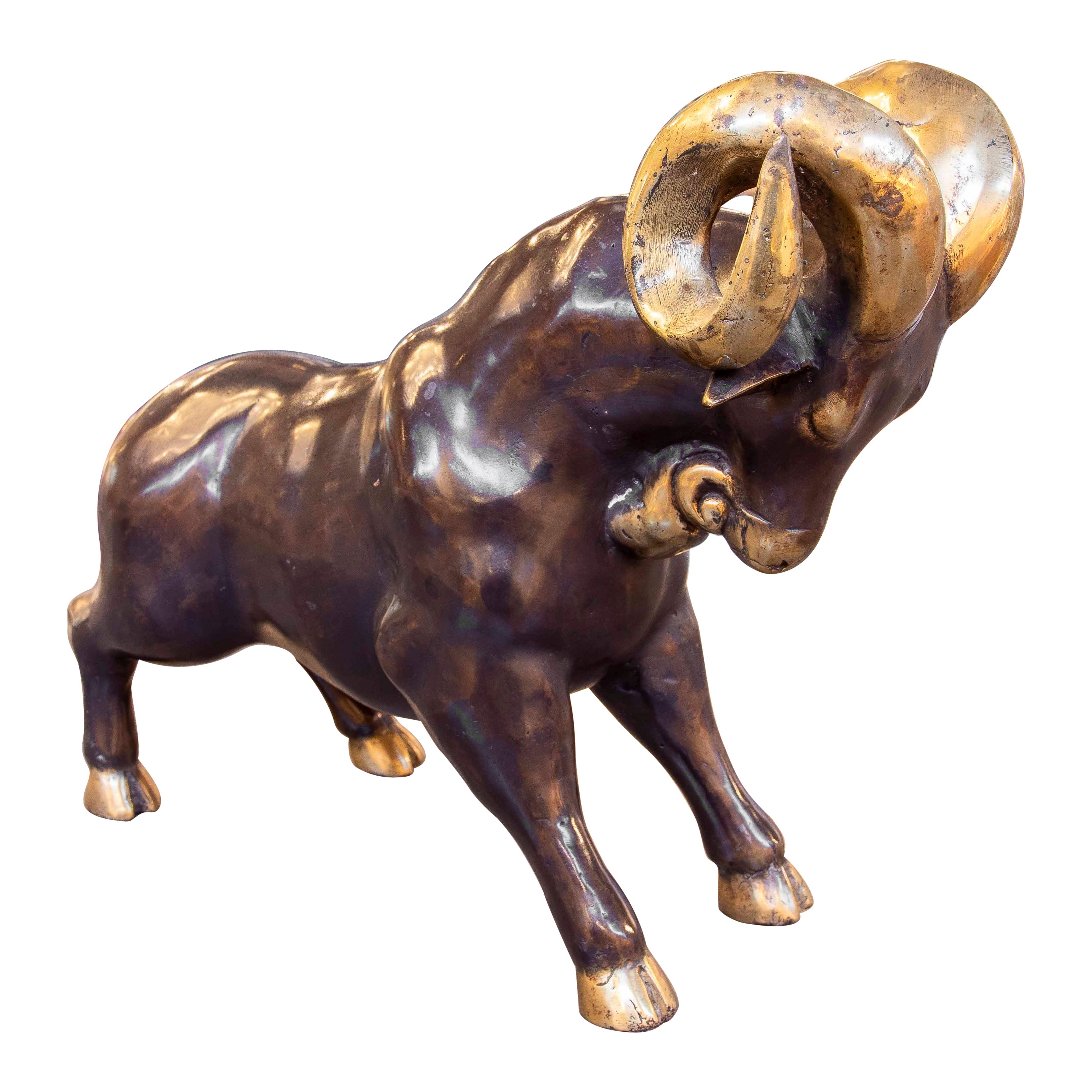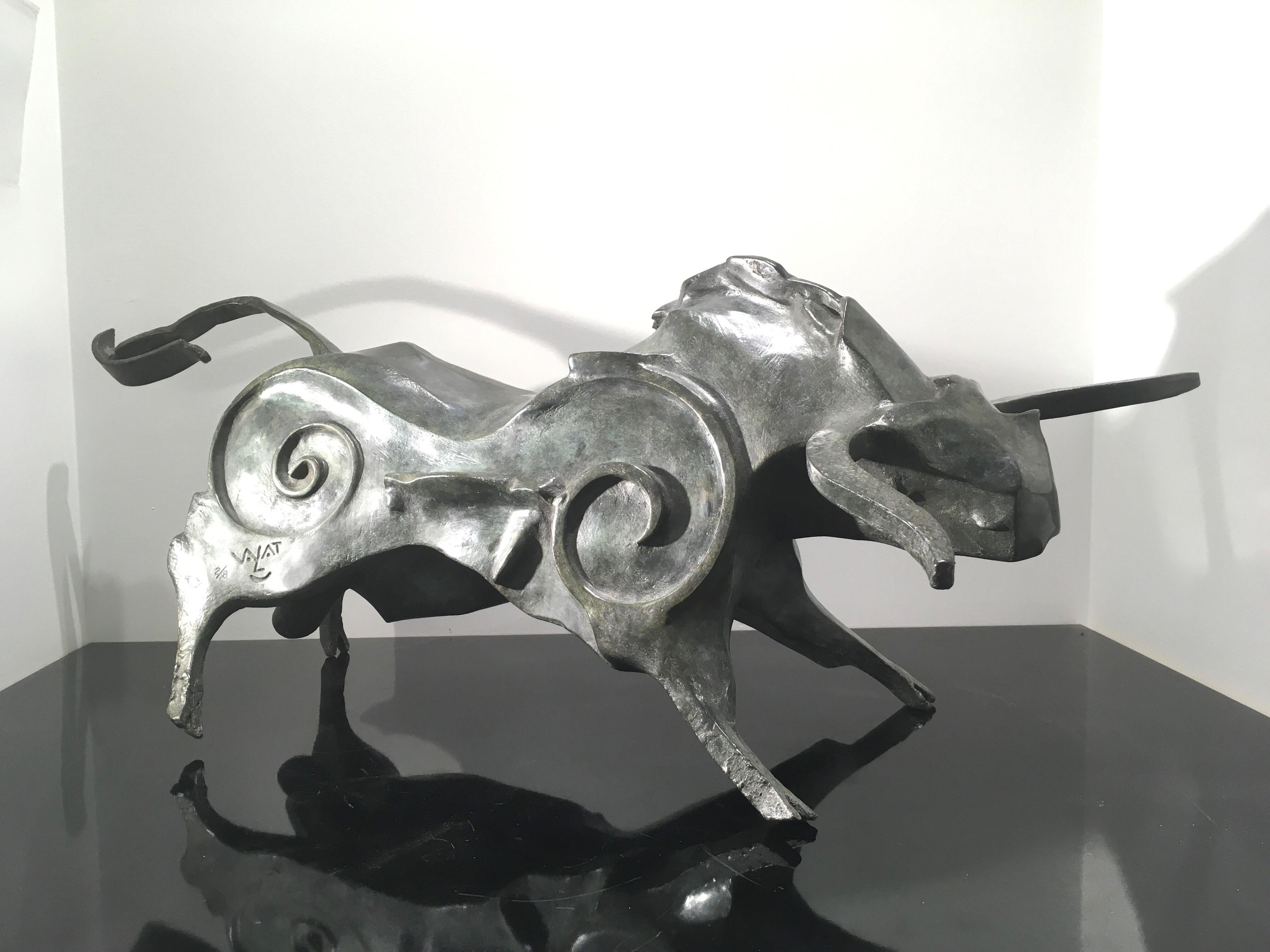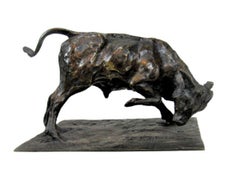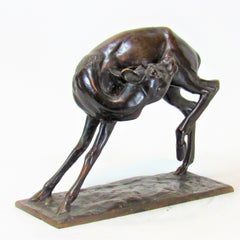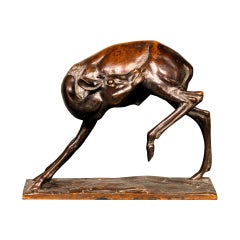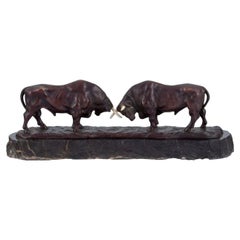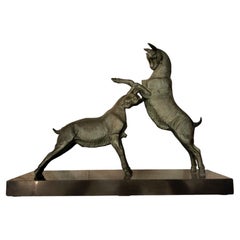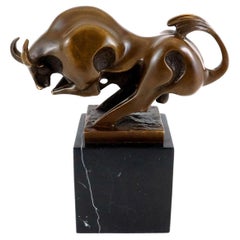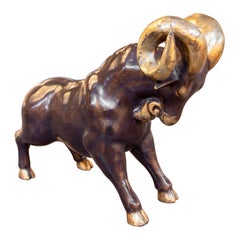Items Similar to Italian Animal Bronze : Battling Rams by Sirio Tofanari
Video Loading
Want more images or videos?
Request additional images or videos from the seller
1 of 9
Sirio TofanariItalian Animal Bronze : Battling Rams by Sirio Tofanari
$54,232.43
£40,157.33
€45,500
CA$74,577.73
A$82,937.66
CHF 43,414.04
MX$1,011,738.55
NOK 545,513.18
SEK 513,125.58
DKK 346,420.50
About the Item
A very rare bronze cast of two battling Rams, by Sirio Tofanari (1886-1969). An old cast with a dark brown shaded patina. On a heavy green marble stepped plinth. Signed Sirio Tofanari on the base, foundry G. Vignali Firenze.
Together with Rembrandt Bugatti, Biagini and Righetti, Sirio Tofanari is recognized as one of the foremost sculptors of the Animalier movement in Italy. He was born in Florence in 1886, the son and grandson of ornamental sculptors and younger brother of the painter and sculptor Salvino Tofanari. Like his father and elder brother, whom he accompanied from a young age when they went hunting on the family estates, Sirio studied at the Florence Academy of Art, attending life classes there from 1902 to 1907. Tofanari moved to Paris and successively to London, where he perfected his technique. In London, he went daily to study the animals at the zoo. In 1908, he exhibited both in Faenza and Turin, where he attracted favorable attention.1928 marked by a personal exhibition of the artist’s work in Brussels, opened by Queen Elisabeth of the Belgians. The presence of this prominent supporter of the arts, who bought from the show for her own collection, is evidence of Tofanari’s considerable reputation at that time. An insightful observer of nature, Tofanari was famous for his ability to carve animals in their particular gait and to catch the naturalness of his subjects thanks to his chiseling prowess. He took part from 1909 to 1934 in all editions of the Venice Biennale, while in the Rome Quadriennale an entire pavilion was dedicated to him. His works can be admired in keynote galleries both in Italy and abroad: Rome, Florence, Paris, London, Brussels, Amsterdam, Buenos Aires, Bahia Blanca, Santa Fe, Rio de Janeiro, San Paolo. In 1937, he moved to Milan, where there was a demand for his work from private patrons, but his house, his studio and its contents were destroyed during an Allied bombing raid in 1942 In 1949, the President of the Republic issued a decree appointing him a member of the Accademia of San Luca in Roma.
About the Seller
5.0
Vetted Professional Seller
Every seller passes strict standards for authenticity and reliability
Established in 2018
1stDibs seller since 2022
5 sales on 1stDibs
Typical response time: 1 hour
- ShippingRetrieving quote...Shipping from: Gent, Belgium
- Return Policy
Authenticity Guarantee
In the unlikely event there’s an issue with an item’s authenticity, contact us within 1 year for a full refund. DetailsMoney-Back Guarantee
If your item is not as described, is damaged in transit, or does not arrive, contact us within 7 days for a full refund. Details24-Hour Cancellation
You have a 24-hour grace period in which to reconsider your purchase, with no questions asked.Vetted Professional Sellers
Our world-class sellers must adhere to strict standards for service and quality, maintaining the integrity of our listings.Price-Match Guarantee
If you find that a seller listed the same item for a lower price elsewhere, we’ll match it.Trusted Global Delivery
Our best-in-class carrier network provides specialized shipping options worldwide, including custom delivery.More From This Seller
View AllYoung Bull Fighting – Bronze Sculpture by Guido Righetti (c. 1926)
Located in Gent, VOV
Guido The bronze patina, a rich dark brown with subtle reddish and golden undertones, enhances the sculpture’s texture and depth, accentuating the anatomy of the animal and evoking t...
Category
20th Century Modern Figurative Sculptures
Materials
Bronze
Italian animal bronze: Young Deer or Antelope by Sirio Tofanari
Located in Gent, VOV
Young Antelope Or Young Deer
A nice bronze cast of a young antelope or a young male deer licking its back, by Sirio Tofanari (1886-1969). An old cast wi...
Category
1930s Art Deco Figurative Sculptures
Materials
Bronze
Animal Bronze Ewe and Ram by Alberic Collin (close friend of Rembrandt Bugatti)
Located in Gent, VOV
A fine quality, twentieth-century bronze model of a ram and a ewe by Alberic Collin (Belgian 1886-1962). Cast by the Rocher Paris foundry signed, inscri...
Category
1930s Nude Sculptures
Materials
Bronze
Young Antelope by Sirio Tofanari
Located in Gent, VOV
A fine bronze cast of a young antelope or male deer licking its back, by Sirio Tofanari (1886-1969). An old model with degraded dark-brown patina and lighter brown tones. Signed Siri...
Category
20th Century Figurative Sculptures
Materials
Bronze
Roaring Lionness
Located in Gent, VOV
A fine quality, twentieth-century bronze model of a roaring lioness by Alberic Collin (Belgian 1886-1962). Prior to casting by the Valsuani foundry it w...
Category
1930s Art Deco Figurative Sculptures
Materials
Bronze
Antoine - Louis BARYE (1795-1875)Tiger surprising an antelope Bronze
By Antoine-Louis Barye
Located in Gent, VOV
Tiger surprising an antelope (terrace without profile)
Bronze with a shaded green patina, circa 1880
Signed 'BARYE', stamped 'H' by the founder Brame
Antoine-Louis Barye (1796-187...
Category
19th Century Figurative Sculptures
Materials
Bronze
You May Also Like
European sculptor. Bulls in combat. Art Deco sculpture in patinated bronze
Located in København, Copenhagen
European sculptor.
Bulls in combat.
Art Deco sculpture in patinated bronze on a black marble base.
From the 1930s.
Indistinctly signed.
Perfect condition.
Dimensions: L 37.0 cm x W 9...
Category
Vintage 1930s Unknown Animal Sculptures
Materials
Marble, Bronze
Dynamic Animal Sculpture of Goats in Bronze, 20th Century
Located in NICE, FR
We are excited to present you with this bronze sculpture of two goats engaged in a dynamic stance. The goat on the right side is rearing up on its hind limbs, with its front legs rai...
Category
20th Century French Art Deco Animal Sculptures
Materials
Onyx, Bronze
Bronze Sculpture of a Bull in Motion, 20th Century.
Located in Saint-Ouen, FR
Bronze sculpture of a bull in motion, 20th century.
Bronze sculpture of a running bull, brown patina, 20th century.
h: 18cm, w: 20.5cm, d: 8cm
Category
20th Century French Art Deco Animal Sculptures
Materials
Bronze
1990s Ram Sculpture in Bronze with Golden Accents
Located in Marbella, ES
This stunning sculpture of a ram, crafted in bronze, features horns and hooves highlighted with a golden finish that accentuates its strength and presence. The piece captures the dyn...
Category
Late 20th Century European Animal Sculptures
Materials
Bronze
Bull by Eric Valat - Bronze animal sculpture, contemporary, figurative, powerful
By Eric Valat
Located in Paris, FR
Bull is a bronze sculpture by contemporary artist Eric Valat, dimensions are 30 × 73 × 26 cm (11.8 × 28.7 × 10.2 in).
The sculpture is signed and numbered,...
Category
2010s Contemporary Figurative Sculptures
Materials
Bronze
Early 20th Century Bronze Sculpture of Elephants
By Antonio Amorgasti 1
Located in Antwerp, BE
Early 20th century bronze sculpture of two elephants with a patinated bronzed finish.
The base signed Ant.Amorgasti, 1924.
Antonio Amorgasti,(18...
Category
Vintage 1920s Belgian Art Deco Animal Sculptures
Materials
Bronze
$1,334 Sale Price
37% Off
